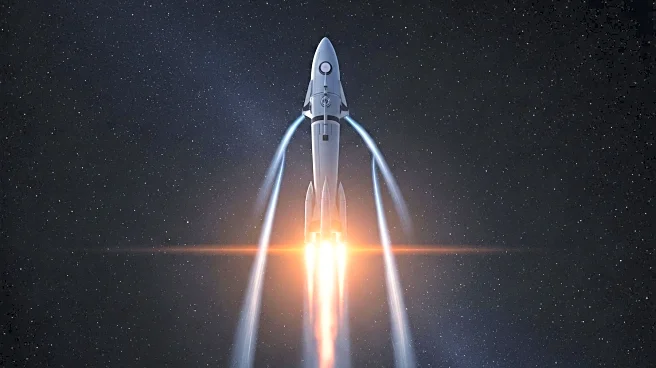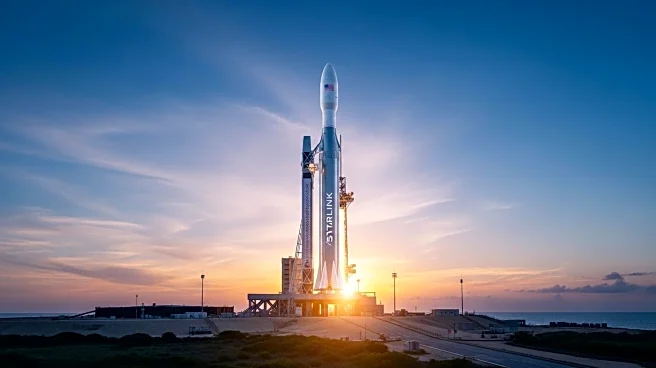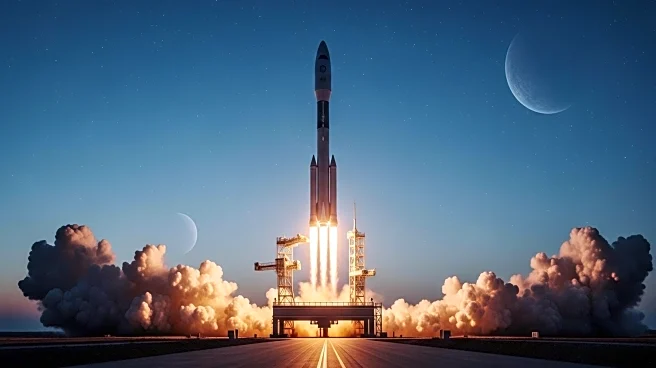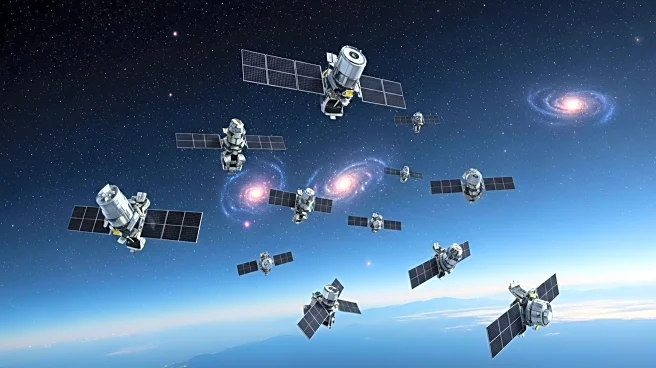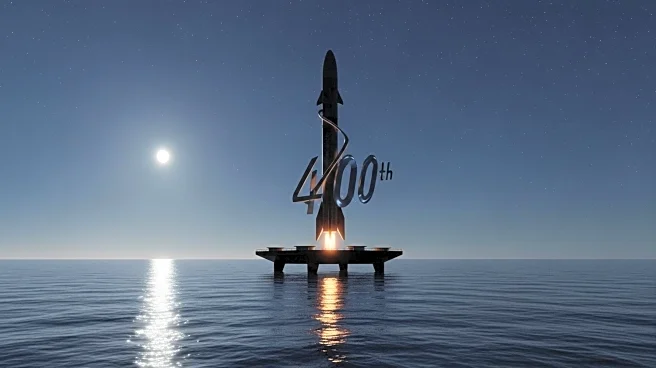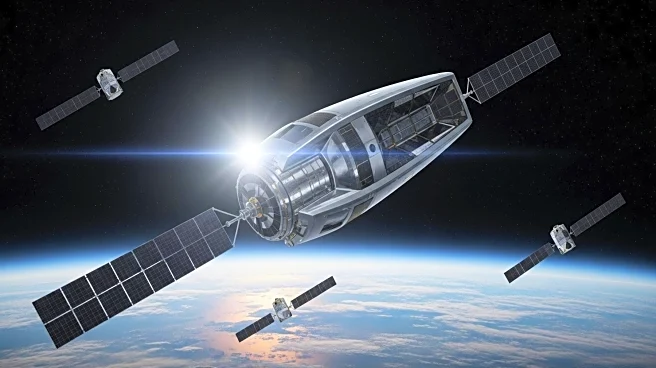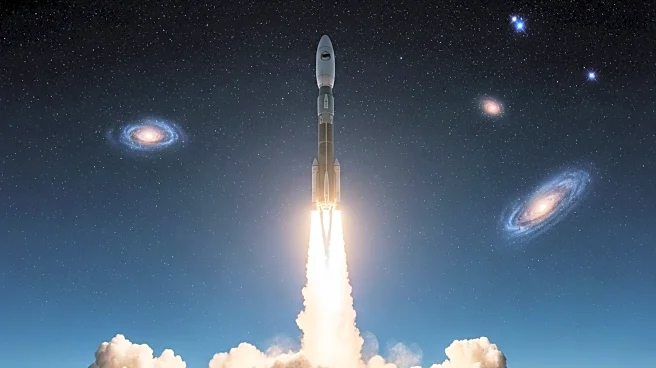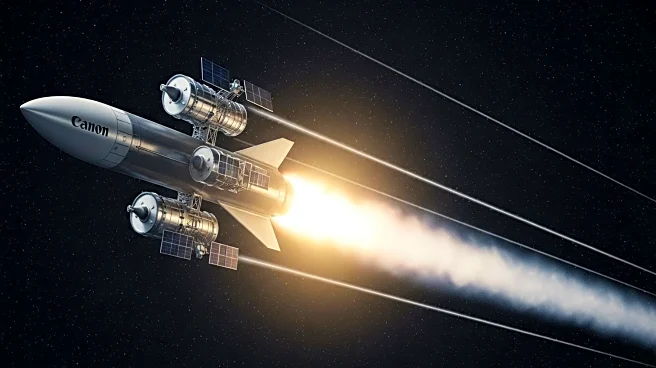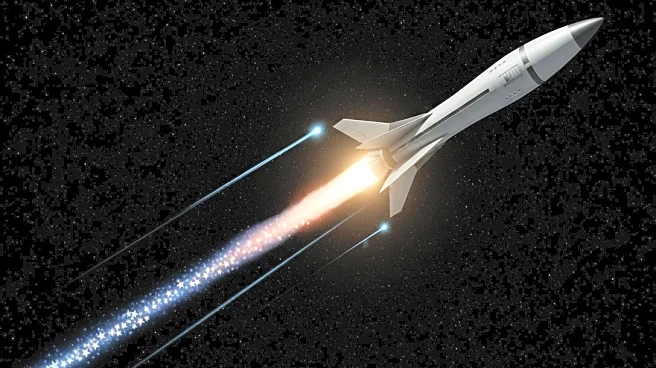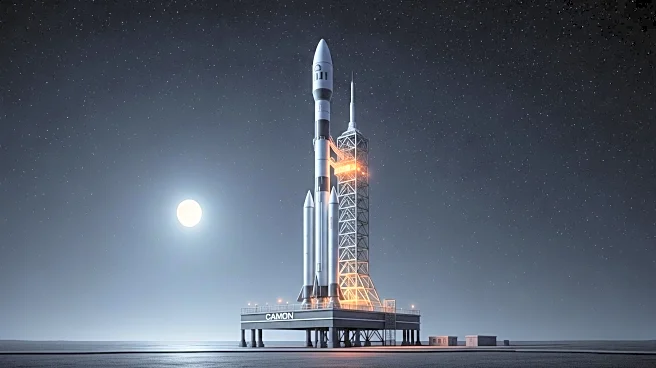What's Happening?
SpaceX is set to launch a Falcon 9 rocket carrying a new batch of Starlink internet satellites from Cape Canaveral on Sunday morning. The launch is scheduled for 7:49 a.m., shortly after sunrise. This mission, known as Starlink 10-14, will see the rocket take a northeast trajectory, potentially offering good viewing opportunities along the Space Coast, depending on weather conditions. The Falcon 9 booster will attempt to land on the 'Just Read the Instructions' drone ship stationed in the Atlantic Ocean, meaning the local area will not experience the usual sonic booms associated with such launches. This launch marks the 23rd flight for this particular Falcon 9 booster, which has previously supported various missions, including NASA's Crew-5 and multiple Starlink deployments.
Why It's Important?
The launch of additional Starlink satellites is a significant step in SpaceX's ongoing efforts to expand its global broadband internet service. Starlink aims to provide high-speed internet access to underserved and remote areas worldwide, potentially transforming connectivity for millions. The successful reuse of Falcon 9 boosters underscores SpaceX's commitment to reducing the cost of space travel through reusability, which could have long-term implications for the space industry. This mission also highlights the increasing frequency and reliability of SpaceX's launch operations, reinforcing its position as a leader in commercial spaceflight.
What's Next?
Following the launch, SpaceX will continue to monitor the deployment and operation of the Starlink satellites as they reach their designated orbits. The company is expected to conduct more frequent launches to build out the Starlink constellation, aiming to enhance coverage and service quality. Stakeholders, including potential customers and regulatory bodies, will be watching closely to assess the impact of these launches on global internet access and the space environment. Additionally, SpaceX's continued success with booster reusability may influence other aerospace companies to adopt similar practices.
